Refer to the exhibit. R2 is a route reflector, and R1 and R3 are route reflector clients. The route reflector learns the route to 172.16.25.0/24 from R1, but it does not advertise to R3.
What is the reason the route is not advertised?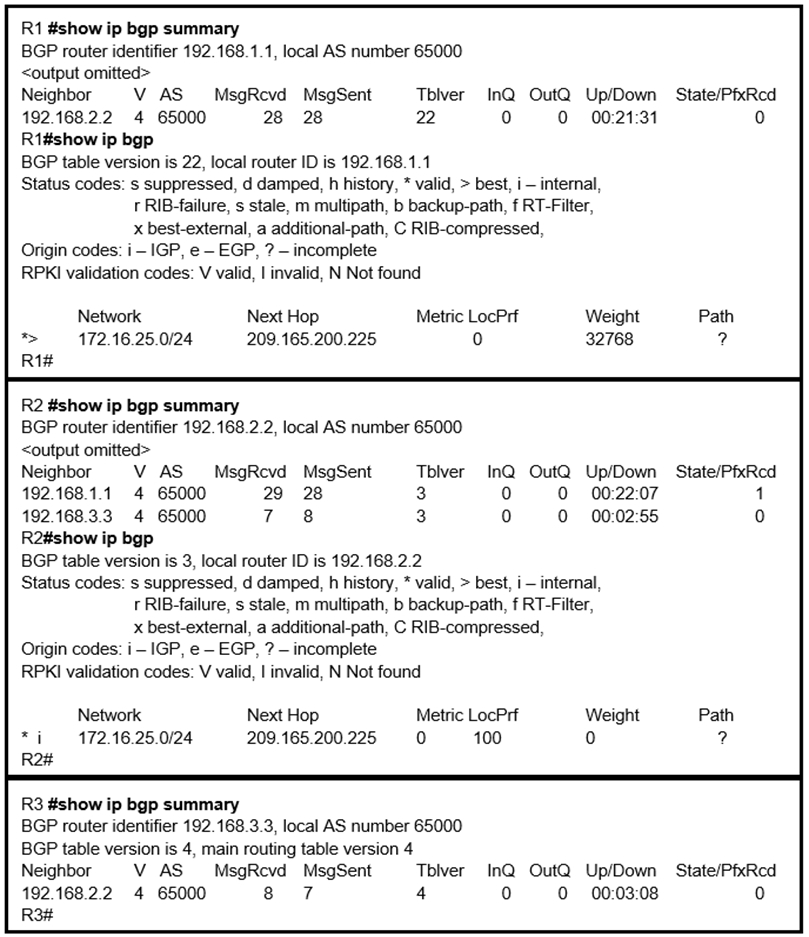
A
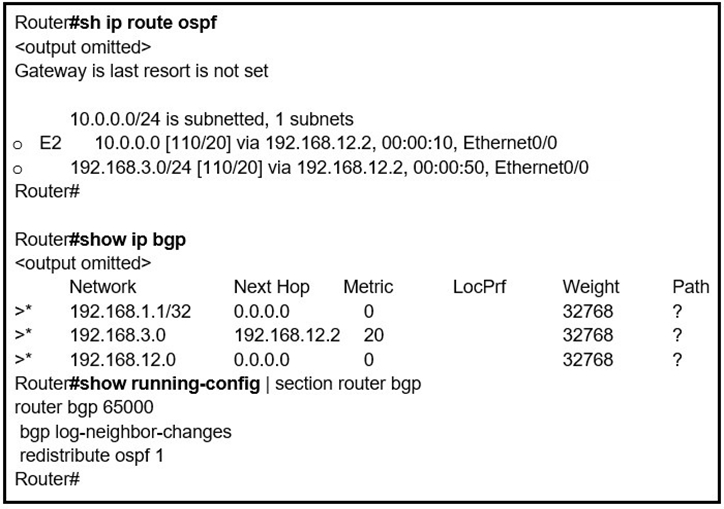
Refer to the exhibit. An engineer is trying to redistribute OSPF to BGP, but not all of the routes are redistributed.
What is the reason for this issue?
D
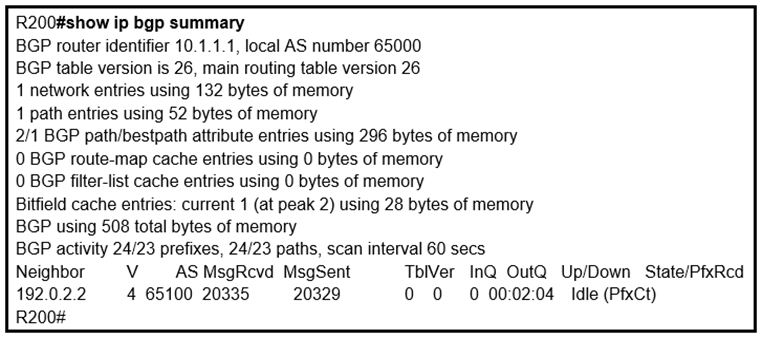
Refer to the exhibit. In which circumstance does the BGP neighbor remain in the idle condition?
D
Which attribute eliminates LFAs that belong to protected paths in situations where links in a network are connected through a common fiber?
B
Reference:
https://www.cisco.com/c/en/us/td/docs/ios-xml/ios/iproute_eigrp/configuration/xe-3s/asr1000/ire-xe-3s-asr1000/ire-ipfrr.html

Refer to the exhibit. An engineer is troubleshooting BGP on a device but discovers that the clock on the device does not correspond to the time stamp of the log entries.
Which action ensures consistency between the two times?
D
Refer to the exhibit. What is the result of applying this configuration?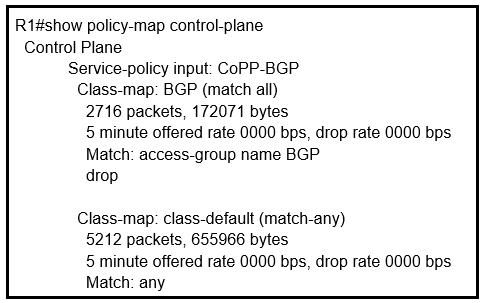
A
Which command displays the IP routing table information that is associated with VRF-Lite?
B
Reference:
https://www.cisco.com/c/en/us/td/docs/switches/lan/catalyst4500/12-2/50sg/configuration/guide/Wrapper-46SG/vrf.html#wp1045708
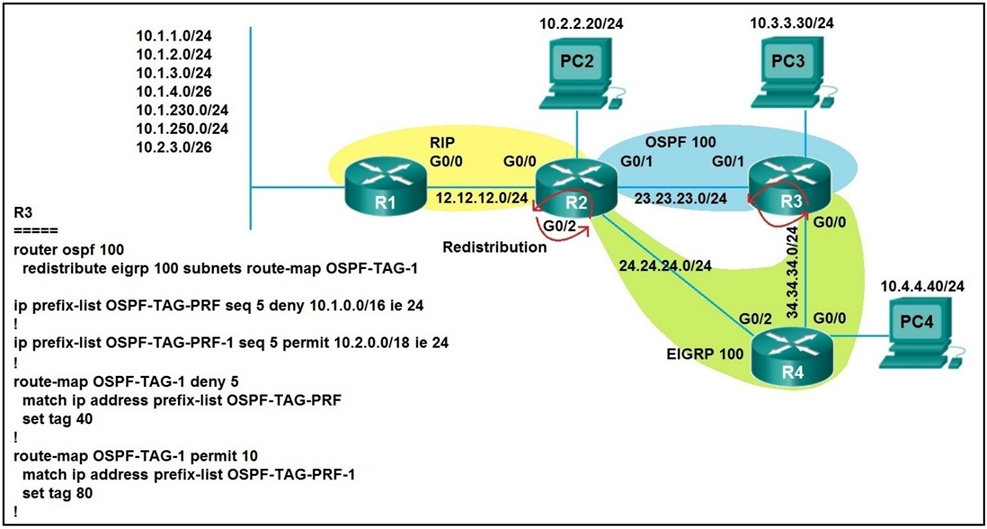
Refer to the exhibit. Which subnet is redistributed from EIGRP to OSPF routing protocols?
A
Which configuration adds an IPv4 interface to an OSPFv3 process in OSPFv3 address family configuration?
D
Reference:
https://www.cisco.com/c/en/us/td/docs/ios-xml/ios/iproute_ospf/configuration/xe-3s/iro-xe-3s-book/ip6-route-ospfv3-add-fam-xe.html

Refer to the exhibit. Which statement about R1 is true?
B